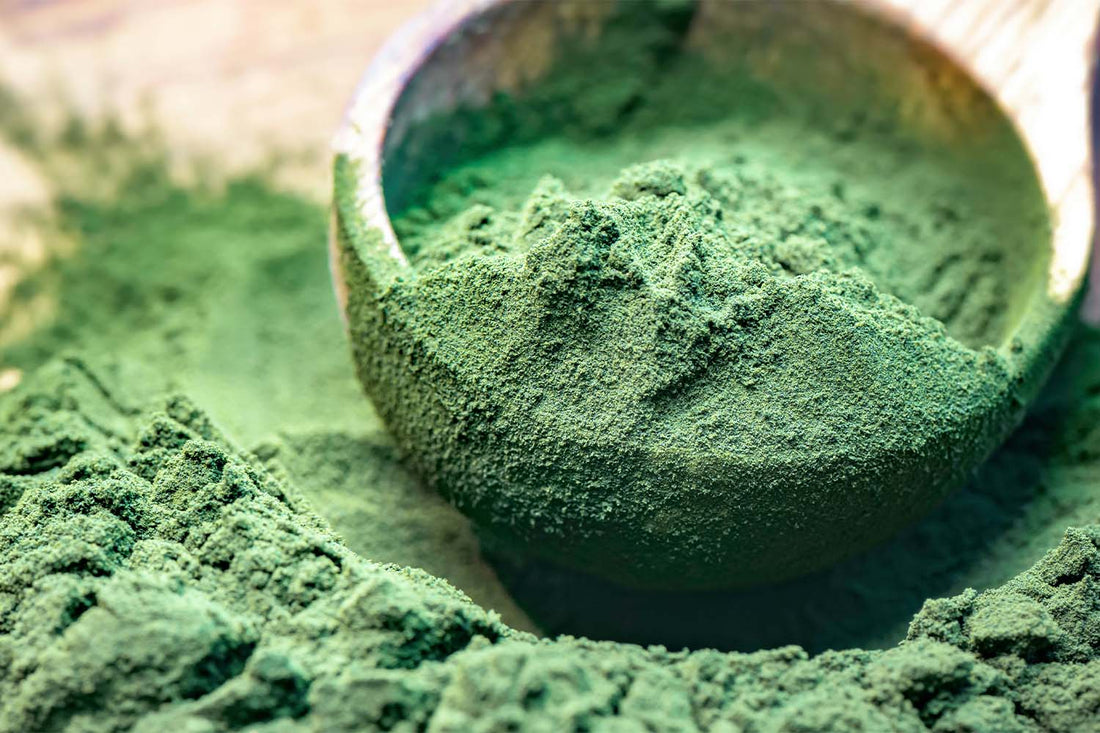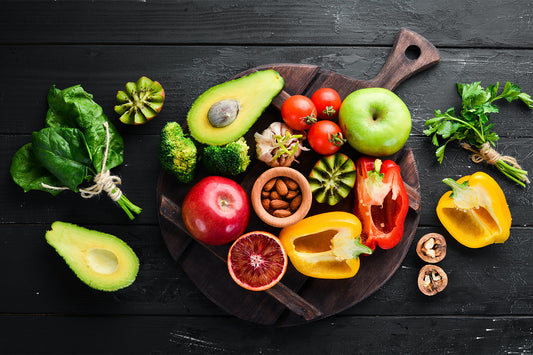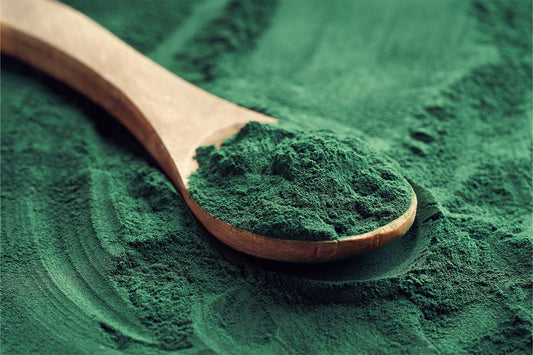You may be wondering how we make our algae omega-3 supplements. At iwi life, we talk a lot about creating supplements that are sustainably sourced and have little impact on the environment.
If you’re a fan of algae supplements, chances are you’ve already heard about the wonders of Spirulina and Chlorella. Today, we will discuss Nannochloropsis algae, which we use in our algae omega-3 supplements.
Not only do we care about creating environmentally-friendly products that are suited for your health needs, but we also care about nutritional transparency. That means being honest and transparent about the ingredients we incorporate into our products.
If you’re interested in learning more about the algae we use and how we sustainably make our products to benefit you and the global community, then keep reading!
What Is Nannochloropsis Algae?

Nannochloropsis algae, a unicellular organism belonging to the genus Nannochloropsis and class Eustigmatophyceae, is a type of marine microalgae that is similar in some respects to Chlorella. Interestingly enough, even though it closely resembles Chlorella, the two tiny plants have some important differences.
This yellow-green algae features a chloroplast with the main pigments of Chlorophyll, astaxanthin, zeaxanthin, canthaxanthin, and violaxanthin combining to create its unique color. Nannochloropsis is incredibly small, only measuring up to 2 to 5 microns, so a single Nannochloropsis alga is not visible to the naked eye. However, its algal cell wall is very strong and highly resilient, making it a perfect candidate for large-scale cultivation.
Several Nannochloropsis species are native to the North Atlantic ocean including Nannochloropsis Oculata, Nannochloropsis Gaditana, Nannochloropsis Salina, and Nannochloropsis Oceanica. Since its habitat is high-salt and high-mineral sea water, this tiny organism adapts easily to the salty underground water found in natural aquifers under certain desert areas. This makes it ideal for large-scale cultivation for food and supplements!
One of our favorite things about Nannochloropsis is how abundant it is in outdoor farming settings. Nannochloropsis can be harvested up to two times a week, all year long! Contrast that with other vegetables like broccoli which can be harvested once.
What Are Its Benefits and Uses?
Nannochloropsis is an extremely versatile microalgae that offers a multitude of potential applications across various industries.
Let's dive a little deeper into some of its benefits and uses, painting a more vivid picture of its potential:
-
Nutritional Profile: Nannochloropsis is rich in vitamins and antioxidants, which are vital for maintaining overall health. These elements are known for their potential to support a healthy immune system and support cellular health during exposure to oxidative stress, making Nannochloropsis a nutrient-rich powerhouse.
-
Biofuel Production: Nannochloropsis is rich in lipids, which makes it a promising candidate for biofuel production. As the world seeks sustainable energy alternatives, Nannochloropsis sequencing offers a renewable source of biofuel, potentially reducing our world-wide dependence on fossil fuels.
-
Omega-3 Supplement: This microalgae is also a source of docosahexaenoic acid (DHA) and eicosapentaenoic acid (EPA) omega-3s, with an especially high concentration of EPA. As a plant-based, sustainable source of these essential polyunsaturated fatty acids, Nannochloropsis can be an excellent dietary supplement, especially for those following vegetarian or vegan diets.
-
Short Generation Times: This microalgae can reproduce extremely rapidly, leading to high yield in a relatively short period. This makes it a highly efficient and cost-effective option for any of its various applications.
-
No Agricultural Land Requirements: Unlike traditional crops, Nannochloropsis doesn't require agricultural land for cultivation as it can be grown in a variety of environments including marine and brackish water. This makes it a sustainable solution that doesn't compete with food production for land use.
-
Reduced Freshwater Needs: Nannochloropsis also has lower freshwater requirements compared to traditional crops. Given the increasing global water scarcity, cultivating this microalgae can help conserve our precious freshwater resources while still yielding valuable products.
-
Aquaculture Feed: In the aquaculture industry, Nannochloropsis serves as a nutritious food source for various marine species, including shellfish, shrimp, and fish. Its high protein and lipid content make it a favored choice for nurturing healthy and thriving marine life.
-
Carbon Sequestration: Like other photosynthetic organisms, Nannochloropsis plays a role in carbon sequestration, absorbing carbon dioxide and releasing oxygen. This helps mitigate the effects of climate change, making Nannochloropsis a powerful companion in our fight against global warming.
-
Wastewater Treatment: Nannochloropsis can also contribute to wastewater treatment by absorbing nutrients such as nitrogen and phosphorus. This natural purification process can help clean our water bodies and maintain ecological balance.
-
Bioplastics Production: Nannochloropsis can be harnessed in the production of bioplastics, providing a more sustainable alternative to petroleum-based plastics. This aligns with the global shift towards sustainable living and responsible consumption.
-
Health and Cosmetics: With its high content of antioxidants, vitamins, and minerals, Nannochloropsis can be utilized in the development of health and cosmetic products. It can contribute to skincare and nutritional supplements, enhancing our wellness and beauty routines.
-
Research Applications: Nannochloropsis serves as a model organism in algal biology research, offering insights into critical areas such as lipid metabolism and photosynthesis. This research can pave the way for innovative applications and discoveries in the worlds of genetic engineering and biotechnology.
-
Biofertilizer: After oil extraction, the spent biomass of Nannochloropsis can be repurposed as a biofertilizer, enriching the soil and promoting plant growth. This sustainable practice can yield a significant increase in healthier crops and contributes to a more secure food supply.
-
Green Chemicals: The use of Nannochloropsis in the production of eco-friendly chemicals showcases its potential to promote a greener economy. This application supports the global transition towards sustainable alternatives, replacing traditional, environmentally harmful chemicals.
How Is Nannochloropsis Algae Grown?
There are many ways that algae in general can be cultivated. Open ponds, closed bioreactors, with sunlight, with artificial light...let's take a look at the different ways algae can grow:
- Photoautotrophically: From the Greek words "phos" (light), "auto" (self) and "trophe" (food), photoautotrophs are organisms which can make their own energy using sunlight via photosynthesis. This means they always contain chlorophyll, the deep green plant compound needed to produce energy from the sun.
- Heterotrophically: "Hetero" in Greek means "another" or "different," so heterotrophs have to consume something different (like sugars) to obtain their energy vs. creating it themselves.
- Mixotrophically: You may be able to guess now that you've learned the other two types — mixotrophs can consume a "mixed" diet of energy they synthesize themselves from sunlight or from eating other things around them.
Microalgae like Nannochloropsis grow quickly in open ponds or labs. They can also grow in seawater with high yields of lipids. It grows fast which means we can get a great amount of Nannochloropsis without harming the environment.
The best news is that Nannochloropsis algae mainly requires salty water (check — no precious fresh water required), abundant sunlight (check — no energy spent on grow lights), and a few key nutrients in the mix. Compared to other crops, the environmental impact of farming algae is incredibly low.
Photoautotrophic Cultivation
Because of Nannochloropsis' ability to create its own food through photosynthesis, growing it in open ponds with plenty of sunlight makes great sense. No grow lights are needed, and the algae makes its own energy, so the environmental impact is extremely low.
One type of open-air pond is called a "raceway pond" because the long channels curve at the ends to form a raceway shape. This style of pond can also use just a single, simple paddlewheel (like the kind that would power a boat in Mark Twain's era) to keep the water flowing, which again uses very little energy resources. Ponds of this nature can also be harvested by gravity — no electric pumps required.
Heterotrophic Growth
Heterotrophic growth of microalgae typically involves using an organic carbon source in place of light for its growth. This method bypasses the limitations often associated with photobioreactors and light-dependent growth, such as light intensity and photoinhibition. However, it's important to note that this method requires careful control of nutrients and environmental factors, as these can significantly impact cell growth and productivity.
Despite these challenges, the heterotrophic method can be particularly advantageous in certain conditions, especially when sunlight is scarce or inconsistent. It can also lead to higher cell densities, making it an efficient method for large-scale production. The flexibility of Nannochloropsis to adapt to different growth conditions, including heterotrophic cultivation, adds to its potential as a versatile resource for various industrial applications.
Mixotrophic Growth
One of the problems when cultivating microalgae for lipid production is light intensity reduction in a closed system like a bioreactor. This issue can be partially solved in a mixotrophic operation. Algae which can grow mixotrophically can grow with both an organic carbon source, like glucose, and light. By being able to use light and sugar for growth can lead to better growth and higher cell densities.
All of those methods are suitable for various strains of the more than 70,000 types of algae, but as you read, outdoor pond farming works best for Nannochloropsis, and results in benefits for humans and the planet. This is how we find inspiration: learning about how even the smallest of cells has the power to restructure our way of thinking about sustainability and farming.
How Is Nannochloropsis Algae Harvested?

Now that you have a better understanding of how Nannochloropsis algae are grown, you may be wondering how it is harvested.
When most of us think of harvesting a crop, we may imagine old-fashioned scenes of wheat being cut by hand, or corn being collected by a massive combine with a spinning thresher, shooting corn kernels into a grain bin. Harvesting microalgae looks pretty different, as you might expect!
iwi life's algae is harvested by gravity, which allows for the lowest energy requirement. The deep green water is collected, filtered, and concentrated, resulting in a high dry weight yield.
Just as traditional farming has evolved from the days of scythes and horse-drawn carts, the world of algae aquaculture is always evolving, too.
And that’s where our core value comes into play: innovation. While there are roadblocks that come from different farming techniques, we also realize that there are more discoveries to be made. The future requires it, so we provide it.
Why Do We Use Nannochloropsis Algae?
We don’t mean to repeat ourselves, but we take time and effort to find ways to make products without harming the environment.
To begin with, algae is immediately more inclusive than fish oil. Many people simply don't enjoy the taste of fish — and especially when it "repeats" (read: burps back) after taking a fish oil supplement.
Far more people choose not to eat fish because they are vegan, or are committed environmentalists. We want everyone to have access to the highest-quality omega-3s!
We also knew algae would be more sustainable since we wouldn’t be contributing to overfishing or using harmful farming techniques.
Specifically, we chose Nannochloropsis algae because it could still provide the benefits in our supplements without having to compromise our morals. This 2018 study shows that marine microalgae like Nannochloropsis provide a far more sustainable solution than fish or krill oil.
iwi life Nannochloropsis Algae Omega-3 Supplements

Let’s take a closer look at what our algae omega-3 supplements can offer now that we know they’re made from Nannochloropsis. Knowing how our supplements are produced and harvested gives it a much more human touch.
We thought long and hard about providing you with supplements that would help aid your health journey. That’s why we feel Nannochloropsis is the perfect addition needed for our algae supplements.
Here’s how our nutrition labels hold up:
- Our Nannochloropsis algae omega-3 supplement contains 850 milligrams of algae oil. And since we know Nannochloropsis contains such a high amount of omega-3 fatty acids, there are 350 milligrams of total omega-3 fatty acids.
- Our Nannochloropsis algae EPA supplement contains 1,000 milligrams of algae oil! That means 419 milligrams of total omega-3 fatty acids as well as 250 milligrams of EPA. If you’re looking for an increased intake on your EPA levels, look no further than our EPA supplement!
- Looking to protect your vision, brain, joints, or overall wellness? Our targeted combination EPA and DHA supplements for Joint, Eye, and Brain health can be great tools in supporting your health goals since it contains the nutrients you need.
We want you to get the most out of our supplements. That means adding as much as we can so you can get back to better living. The fact that our supplements are so effective and are grown using sustainable farming techniques — well, that's just a winning situation.
iwi life’s Thoughts on Nannochloropsis
As we’ve discussed, there are a lot of benefits when it comes to Nannochloropsis. With time, we believe that it will become an even bigger and more popular addition to more dietary habits and supplements.
Soon people will recognize how sustainable an option Nannochloropsis is, and how many different uses it can have. We believe in its power and how it can pave the road to sustainable living.
We also know that more research is needed when it comes to different ways we can produce and source it. If there’s anything to know about iwi life, it’s that we are always up for a challenge.
We believe in our core values: innovation, integrity, and inspiration. And that’s what we believe Nannochloropsis does. It helps show us that farming can be reinvented, and by using renewable energy and sustainable resources, we can help feed the world.
Learning how to feed a growing global community with less land takes patience, dedication, and commitment. That’s why we have learned how to cultivate Nannochloropsis and use it to change our future.
And lastly, we believe in ourselves and you. You have the right to know what you are consuming and to have the choice when making decisions about your health.
That’s why we want to provide you with the information you need, so we can grow together in learning how to live healthy on a sustainable planet.
Choosing Algae Supplements From iwi life
We are excited about Nannochloropsis algae and the promise it brings to the future of sustainability. We are proud that we took on the challenge to help nourish the world without contributing further to its depletion.
That’s why we created our algae omega-3 supplements made from Nannochloropsis. Better living for the planet and everyone starts now, so shop our supplements today and become a part of something bigger.
Ready to get started? Shop us today and check out all of our different Nannochloropsis algae supplements!
Sources:
Nannochloropsis - an overview | ScienceDirect Topics
Exploring the Potential of Nannochloropsis sp. Extract for Cosmeceutical Applications | PMC
















